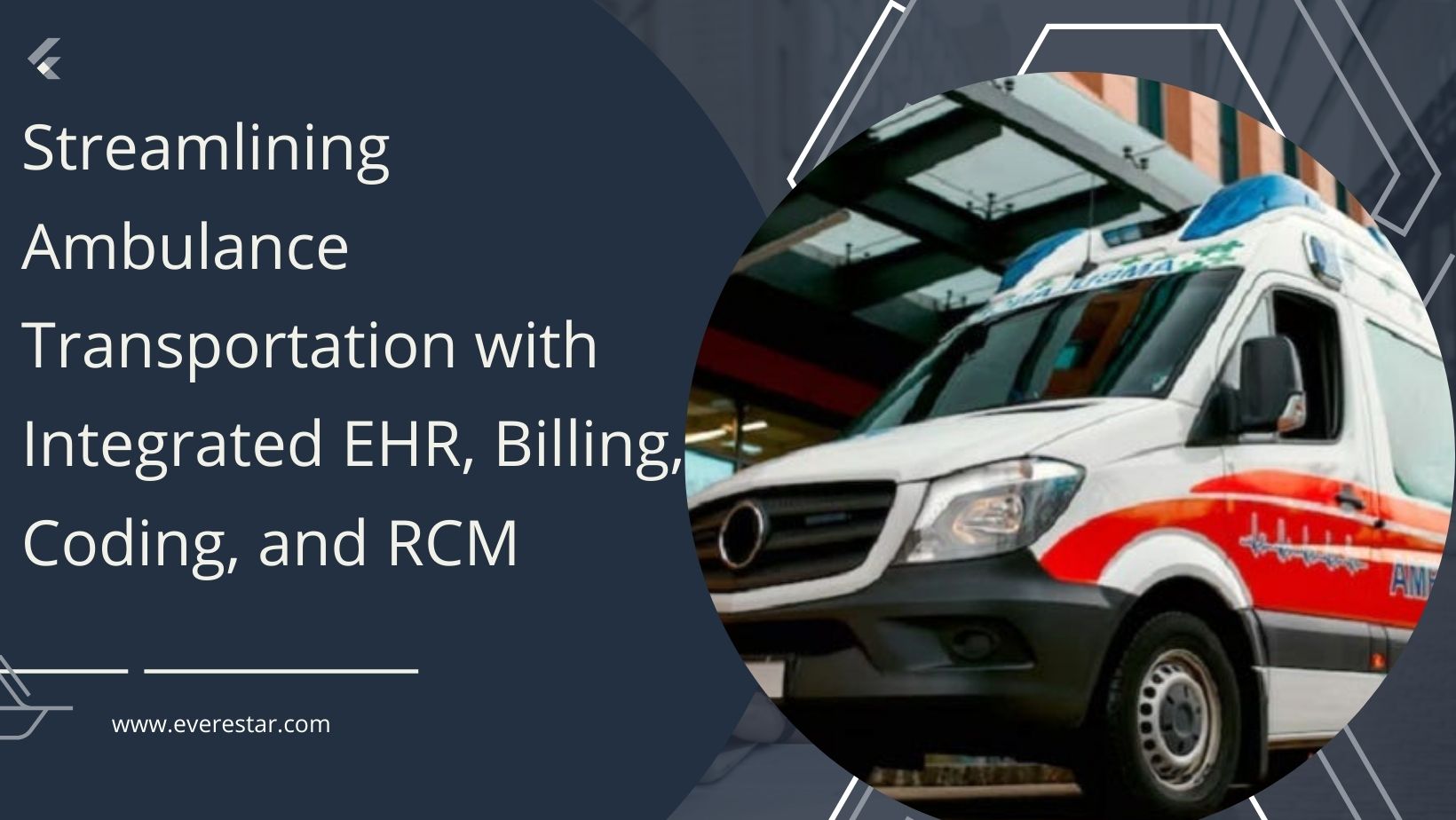Ambulance transportation involves unique challenges, from timely patient care to accurate billing. An integrated system that seamlessly connects EHR, billing, coding, and RCM is essential for overcoming these challenges and delivering quality healthcare services.
Ambulance Transportation EHR
Definition and Purpose
An Ambulance Transportation EHR is a comprehensive electronic system designed to capture and manage patient information during ambulance services. It includes features such as real-time data entry, documentation of patient demographics, medical history, and incident details.
Features and Functionality
Integration with hospital EHRs allows for better care coordination. Paramedics and healthcare providers can access up-to-date patient records, leading to improved decision-making. Real-time data entry ensures accuracy and reduces the risk of errors.
Compliance and Security
Compliance with Health Insurance Portability and Accountability Act (HIPAA) regulations is paramount. Ambulance EHR systems employ robust security measures to protect sensitive patient data, ensuring privacy and compliance.
Medical Billing for Ambulance Services
Specifics of Ambulance Billing
Ambulance billing is unique, requiring precise coding and documentation. The blog post explores the challenges involved and the importance of accurate billing for sustainable operations.
Coding for Ambulance Transportation
Detailed information on HCPCS Level II and CPT codes specific to ambulance services is provided. The post addresses common challenges in coding and emphasizes the significance of accurate coding for reimbursement.
Reimbursement Challenges and Solutions
Issues related to denied claims and reimbursement delays are discussed. Strategies for improving reimbursement rates and reducing financial challenges are explored.
Coding in Ambulance Transportation
ICD-10 Coding for Ambulance Services
A comprehensive overview of relevant ICD-10 codes for ambulance transportation is presented. The blog post emphasizes the importance of accurate coding to demonstrate medical necessity.
Documentation Guidelines
The post provides detailed documentation requirements for accurate coding. Training and education for ambulance staff on proper documentation practices are highlighted.
Revenue Cycle Management (RCM) in Ambulance Services
Overview of RCM
The concept of RCM is defined, and its components are explained. The post discusses the importance of RCM in optimizing revenue for ambulance services.
Challenges in RCM for Ambulance Transportation
Common challenges, such as delays in claims processing and managing denied claims, are addressed. Strategies for overcoming these challenges are outlined.
Strategies for Efficient RCM
The blog post explores automation and technology solutions to streamline RCM processes. Regular audits and performance assessments are recommended for continuous improvement.
Integration of EHR, Billing, Coding, and RCM
Benefits of Integration
The advantages of integrating EHR, billing, coding, and RCM systems are discussed. Streamlined workflows and reduced manual errors contribute to improved efficiency.
Case Studies and Success Stories
Real-world examples of organizations successfully integrating these systems are presented. Measurable improvements in efficiency and revenue demonstrate the transformative impact of integration.
Conclusion
In conclusion, the integration of EHR, billing, coding, and RCM is paramount for optimizing ambulance transportation services. By streamlining workflows and ensuring accuracy in documentation and billing, healthcare providers can deliver better care while maintaining financial sustainability.


